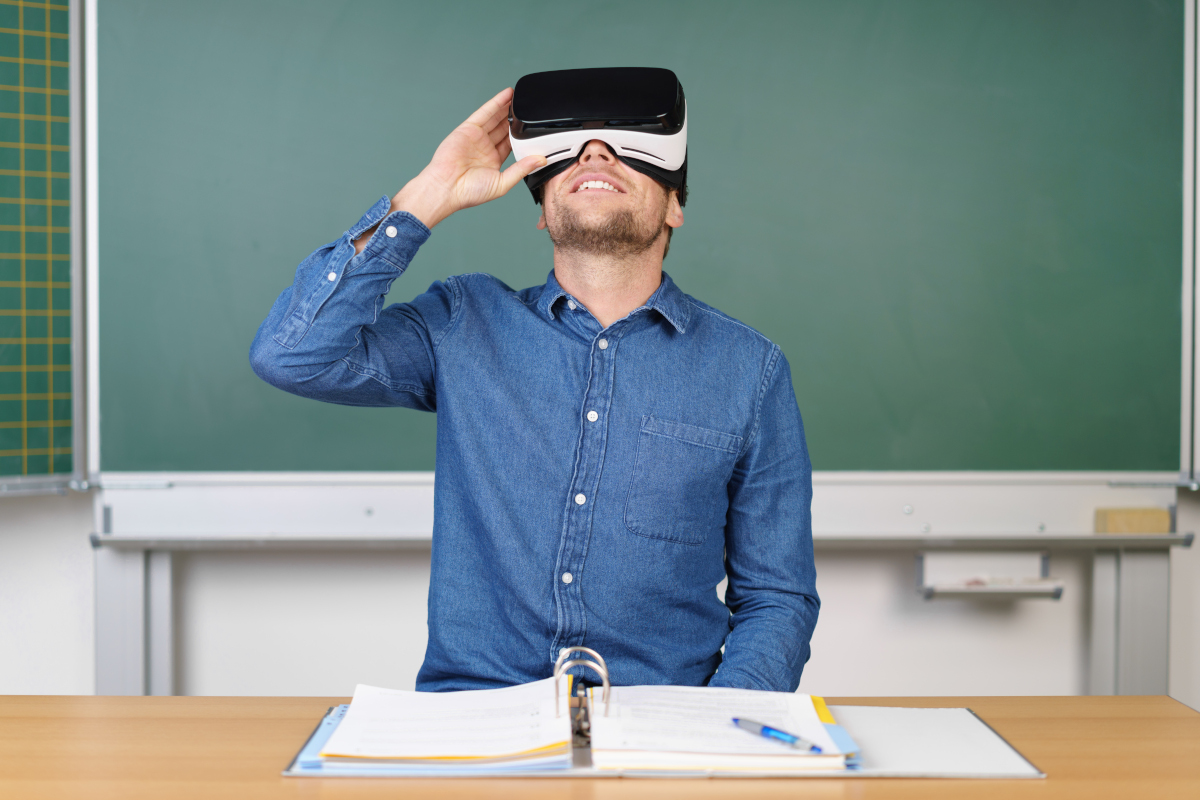Virtual reality (VR) training continues to grow in popularity. The technology is versatile and more accessible than ever before. Businesses that add VR segments to their training programs gain several advantages, including:
- Access to real time training data
- Realistic training without risk
- Enhanced creativity in training
- Training that can be done remotely
VR can also be used to collect novel data that wasn’t as easy to obtain previously, like gestures, eye tracking, and behavior.
VR and augmented reality (AR) markets reached $12 billion in 2020, which was an impressive 54% annual increase. Predictions place the market at around $72.8 billion by 2024.
It’s well worth a closer look to determine if VR has something your organization needs to train more effectively and efficiently. It’s already in use in a variety of industries, including gaming, healthcare, education, manufacturing, automotive, entertainment, and advertising.
If you aren’t sure where to begin, consider what your training program could do with VR. The following list highlights seven training situations that are made better when taught with VR content.
Inclusion and Diversity Training
Many companies are paying closer attention to diversity and inclusion. Developing a workforce that can recognize discrimination will help you build a positive environment for everyone who interacts with your organization. That includes interactions between workers, partners, and clients or customers.
VR can be used to create scenarios that teach learners racial awareness, empathy, and how to identify and handle microaggressions.
Using VR tech gives learners a chance to develop these skills without affecting anyone else on the job. Trainees learn to identify problematic behavior and gain the tools to deal with it and work towards positive outcomes.
Demonstrating the proper way to be an ally in a VR simulation will make it easier to do the same in a real-life situation.
Crime and Emergency Procedure Training
Unfortunately, crimes and emergencies can happen at any workplace. The risks may vary depending on location and industry. For example, someone working in retail may be at a higher risk of robbery while someone in a manufacturing job may face a higher risk of injury due to malfunctioning equipment.
One thing that these situations have in common is that they are unexpected and cause high levels of stress. Workers must be able to react quickly and follow safety procedures to prevent further injury or a physical attack.
VR is excellent for this type of training. Businesses can create scenarios that focus on the types of crimes or emergencies that their workers are more likely to face. VR puts the learner in a realistic situation that looks just like their workspace without the risk.
The scenario can include branching options that allow the user to explore potential outcomes when taking different actions. VR is immersive, which makes this training more powerful than simply reading instructions in a manual or on a poster.
High-Risk Training Involving People
Some jobs must be done right, or people could get hurt. VR is a valuable tool to help professionals train for these careers without putting a human being at risk. Healthcare is one of the biggest industries that come to mind that would fall into this category.
For example, a surgeon must be extremely skilled and knowledgeable before they begin their first procedure. They could severely harm a patient or worse if they don’t do their job perfectly.
VR creates a safe environment where a surgeon can practice their trade and improve their skills before they meet with their first patient. It’s also helpful when testing med students before allowing them to move on to higher-risk tasks that involve real patients.
Even well-established surgeons can benefit from VR training. They can use the technology to learn how to perform new procedures or known procedures that have been changed or improved upon in recent years.
Training with Expensive Materials or Components
Jobs that require components or materials can be costly to train. Those materials or components may be damaged and have to be discarded while trainees learn how to use them.
Before a company begins giving a training class costly materials to use, they can first train them with VR. Learners can develop their skills before they touch anything that can be broken or misused.
It’s normal to make mistakes when learning something new. VR helps reduce the cost of those mistakes. Your training class will be better prepared when the time comes to handle the real thing.
Operation of Machinery and Vehicles
Vehicle and machinery simulations are another way to use VR. Anything that is driven will have an interface that can be recreated digitally. Driving sims and video games already exist, so this isn’t a new concept.
The difference is that VR adds the realism needed to make the experience as authentic as possible. Test learners on their knowledge of driving and the location of important controls and gauges.
This can also be combined with emergency training to educate learners on how to handle unexpected situations while machines are in operation, like a malfunction or impact.
Modules can be developed based on the specific makes and models of the vehicles or machinery your company uses. This gives learners an accurate experience that will make them less likely to make mistakes when they get behind the wheel or take control of equipment.
Product Assembly Training
Manufacturing jobs often rely on their teams being efficient. A mistake can cost both time and materials.
VR content gives trainees an advantage before they are put on the assembly line. Let them learn how to assemble a product or part without risk to materials and at their own pace. As they improve, they can be tested with a time limit, more complex tasks, or varied environmental conditions.
For many, VR training is more effective than traditional manuals and instruction. It works with more senses, allowing employees to see the parts, tools, and devices they need as well as hear what’s happening while handling objects.
Trainers can observe learners in a safe setting to provide guidance as needed until they can do it on their own – all without wasting parts, supplies, or materials.
Training for Employee Onboarding
Many businesses do not adequately onboard new hires. Skipping this important step can be an expensive mistake. Onboarding helps workers acclimate to their job roles. It also gives them the tools and information they need to become a strong part of your team.
Onboarding has a direct impact on retention rates. A TMF Group study found that companies with a solid onboarding process retained up to 60% of their staff over four years.
Sweetwork training and coaching firm reported that 93% of new hires said that the onboarding process determined whether they would stay with a company.
VR can be used in your onboarding efforts. Virtual tours of the workplace can be given before the new hire steps foot in the office. Roleplaying scenarios help new hires learn the basics of interactions with coworkers and customers.
VR training is a powerful tool with nearly limitless versatility. Visit LMS.org to find out which LMS platforms support VR and AR.







